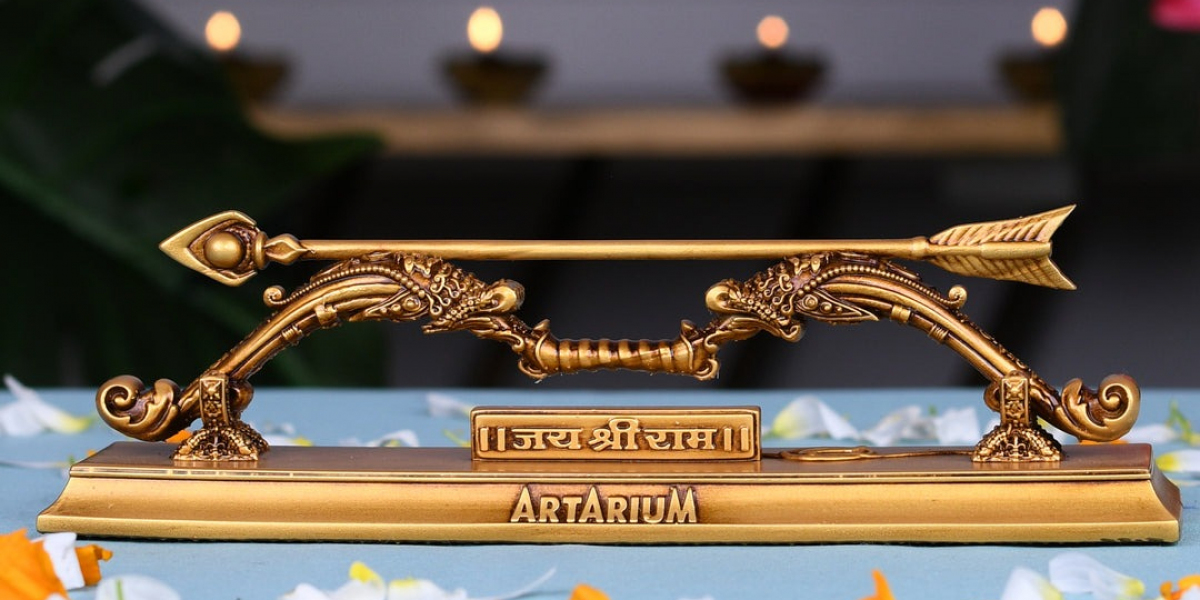Introduction:
Ram Dhanush, also known as the bow of Lord Rama, holds a significant place in Hindu mythology and cultural heritage. This iconic artifact is not merely a weapon but a symbol of righteousness, strength, and divine grace. In this comprehensive exploration, we delve into the rich history, symbolism, and spiritual significance of the Ram Dhanush, shedding light on its enduring legacy.
Historical Context and Mythological Significance:
- The Ram Dhanush finds its origins in the epic Hindu scripture, the Ramayana, where it is described as a celestial bow gifted to King Janaka, the father of Sita, by the gods.
- According to the Ramayana, the bow was broken by Lord Rama during the Sita Swayamvar (Sita's marriage ceremony), thereby winning her hand in marriage and fulfilling the prophecy of Lord Vishnu incarnate.
Symbolism of Strength and Virtue:
- The Ram Dhanush symbolizes not only physical strength but also moral integrity and righteousness. Lord Rama's ability to wield the bow with skill and precision embodies the ideals of dharma (duty) and justice.
- It serves as a reminder of the power of truth and righteousness to overcome adversity and vanquish evil forces, as depicted in the Ramayana's narrative.
Spiritual Lessons and Moral Values:
- The story of Ram Dhanush imparts timeless lessons in humility, devotion, and perseverance. Lord Rama's unwavering dedication to upholding righteousness, even in the face of immense challenges, serves as a source of inspiration for devotees.
- It teaches the importance of staying true to one's principles and values, even when confronted with temptations or obstacles along life's journey.
Cultural Significance and Festivals:
- Across India, the legend of Ram Dhanush is celebrated during festivals such as Ram Navami, which commemorates the birth of Lord Rama. Devotees gather to recite hymns, perform rituals, and enact scenes from the Ramayana, paying homage to the divine hero and his iconic bow.
- The Ram Dhanush is also a recurring motif in various forms of art, literature, and performing arts, serving as a symbol of cultural pride and heritage.
Modern Interpretations and Relevance:
- In contemporary times, the Ram Dhanush continues to resonate with people as a symbol of hope, courage, and resilience. Its message of triumph over adversity and the victory of good over evil remains as relevant today as it was in ancient times.
- The Ram Dhanush serves as a beacon of inspiration for individuals navigating life's challenges, reminding them to draw upon their inner strength and virtue to overcome obstacles and achieve their goals.
Conclusion:
The Ram Dhanush stands as a timeless emblem of strength, virtue, and divine grace, inspiring generations with its rich symbolism and profound significance. Beyond its mythological origins, it serves as a source of spiritual guidance, moral teachings, and cultural pride for millions of devotees worldwide. As we reflect on the legacy of Ram Dhanush, may we draw inspiration from Lord Rama's unwavering commitment to righteousness and strive to embody its timeless virtues in our own live








